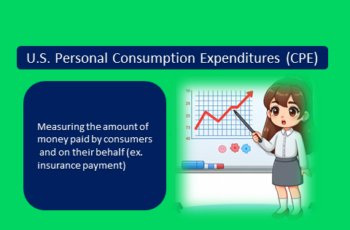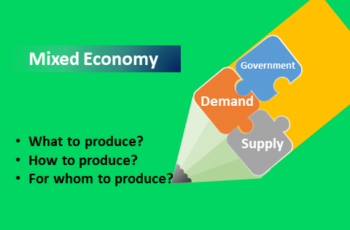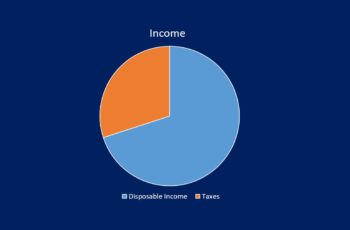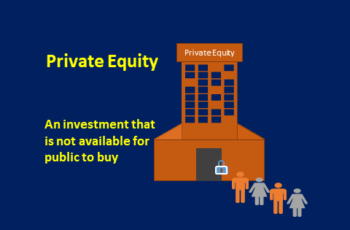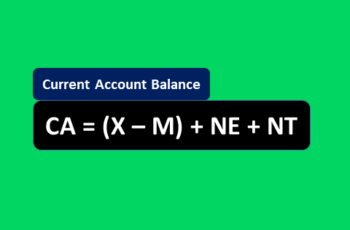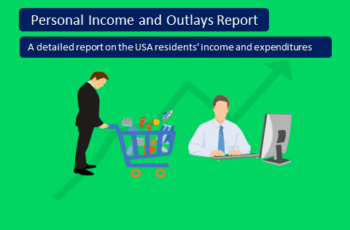What Is Deflation?
Deflation is the opposite of inflation, a continuous fall of prices in an economy, commonly calculated in a year. It is different from disinflation. Deflation is when inflation is negative, and disinflation is when inflation is positive but slowing down.
A general price decrease is destructive and increase public debt. On the other hand, disinflation is a good thing when the inflation rate is higher than mild inflation. However, it does not happen as commonly as inflation does. Deflation even might not happen in decades in some nations.
General price reduction seems a good thing for many people. They may think that consumers pay less to buy products and services and that manufacturers can purchase raw materials at lower prices. Nonetheless, in reality, it is not correct for the whole economy, even some may benefit from it.
Central banks are afraid of deflation. For example, the Fed Reserve of the United States targets inflation of around 2%, and if the inflation does not meet the targeted percent, the Fed takes action to increase the money supply to raise inflation.
Why Deflation is Bad?
Deflation is bad for the economy, creates chaos, and lasts a long period.
Deflation Discourage Spending
Price reduction discourages spending. The logic is that why should a consumer spend when he can buy more in the future?
If consumption drops, especially in developed nations like the USA, the whole economy will experience a negative growth rate. Consumption is a massive portion of the GDP equation, a key for the whole economy.
Deflation Discourage Investment
Deflation discourages investment. Producers can purchase raw materials at a lower price relative to the past. Furthermore, the price of raw materials will drop further until the products are manufactured.
Because the raw material price is falling, consumers cut their spending, and investors expect further price cuts, they sell at a lower price to protect themselves from further losses.
The case is the opposite for exporting products that benefit from deflation. However, the problem is that export is a mall portion of most countries and most of the economic growth depends on domestic consumption.
Deflation Increase Unemployment Rate
Deflation increase unemployment. When investment falls, unemployment will rise and vice versa. It discourages spending and investment that directly affect the unemployment rate.
What Are the Origins of Deflation?
Some forces cause deflation that can be market factors or political decisions. The problem is that the falling price trend can last very long, and the government should be afraid of it.
Generally, like inflation, deflation causes can be from the demand-side or supply-side. I am going to explain briefly in the following.
Demand-Side Origin of Deflation
Demand-side deflation causes are commonly political or government mismanagement. When people cut their demand, the price will fall based on demand and supply rules. Here I will explain two reasons that cause falling prices from the demand side.
1. Demand-Side Deflation Lower Trust and Confidence
Low trust and confidence are when people cannot trust the economic situation. Thus, they want to save more to protect themselves from the bad unpredicted economic situation in the future.
Generally, low trust and confidence are due to low-quality government policy or mismanagement by the government. When a government doesn’t have plans and programs and cannot implement them correctly, people lose confidence leading to less consumption by consumers.
2. Demand-Side Deflation Reduces the Money Supply
Money supply reduction can cause demand-side deflation, but it is unlikely because the government can print money as much as it wants. Why not print money when it can?
In theory, it can happen, but I am not convinced.
There is an example of a cryptocurrency that confirms money supply reduction as a reason for the average price reduction if we price goods and services in bitcoin. Bitcoin has a tightening policy which means its supply amount cuts over time. Bitcoin price started rising from around $4000 in early 2020 and finished at about $40000 at the end of 2020. The problem is that government and people do not recognize it as means of exchange.
Supply-side Deflation
It is a market rule that a supply increase causes the price to fall. Anything that can increase the money supply while demand for money is low, will be the reason for deflation. Worth mentioning that some products like electronic devices fall their price but electronic devices alone cannot cause deflation. Deflation is when the average prices of goods and services fall not specific products alone.
This article briefly explains some causes that are the reasons behind falling average prices from the supply side.
1. New technology
New technology will cut the cost of production that enable producers to cut prices to increase sales. The new technology should be enough potent to cause average prices to fall. For example, if robot technology development improves, it can cause production costs to drop in any industry.
2. New resources
New resources decrease the average price when the economy of a nation depends on that resources. For example, finding new raw material sources, causes supply increase and subsequently price reduction.
Winners of Deflation
Deflation is not harmful to everyone. For some people, a price reduction is a good thing. Here are some of those people that benefit from falling prices.
1. Exporters
Exporters benefit from deflation if their origination is from the supply side. They can purchase at a lower cost, get a competitive advantage in production cost and sell to other nations.
2. Fixed Income Earners
Fixed income earners such as retirees, soldiers, and governmental teachers benefit from deflation. The purchasing power of their income will rise, and the government mostly does not react to these changes. Fixed income earners can save and spend less, which means a benefit.
3. Bond Investors
Bond investors also benefit from the average price decline in two ways: first, the purchasing power of their money increases, and second, they receive interest on bonds.
4. Lenders
Lenders like bond investors benefit by receiving interest and increasing purchasing power of their money at the same time.
Losers of Deflation
Deflation is costly for some people in society. If someone is benefiting from a situation, some will lose. Here are people who will lose the average price fall.
1. Importers
The importer is the loser when the price decreases. When people cut their spending, importers have no choice but to sell at a lower price. Additionally, the purchasing power of the paid amount for imported goods will decrease.
Importer often cannot shut down their business due to uncertainty hoping the price rise again. Shutting down the business will cost them a lot by selling its assets at a much lower price than the purchased price.
2. Borrowers
A borrower loses during this period by paying interest and paying its principle when it has much higher purchasing power than the time borrowed.
3. Investors
An investor loses in a when prices fall due to a decline in sales. He may close his business due to insufficient sales, which leads to loss or negative profit.

